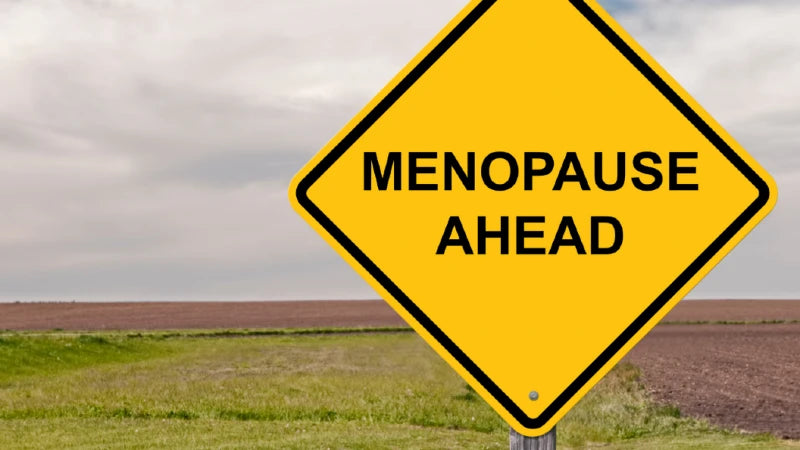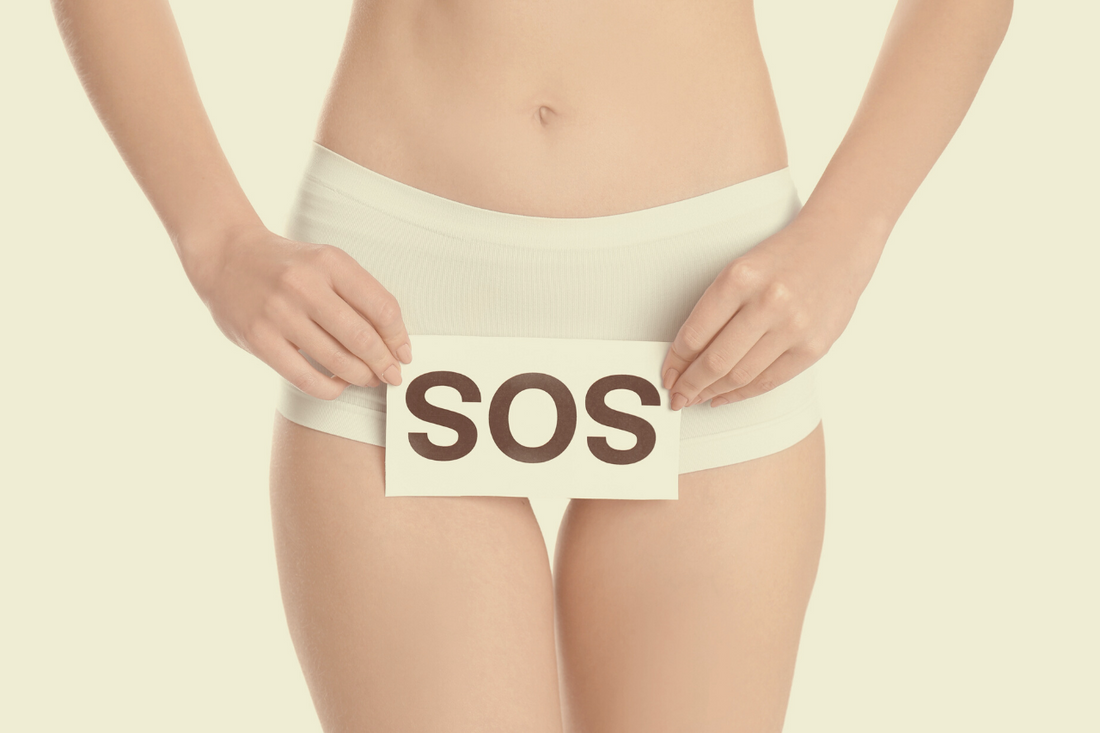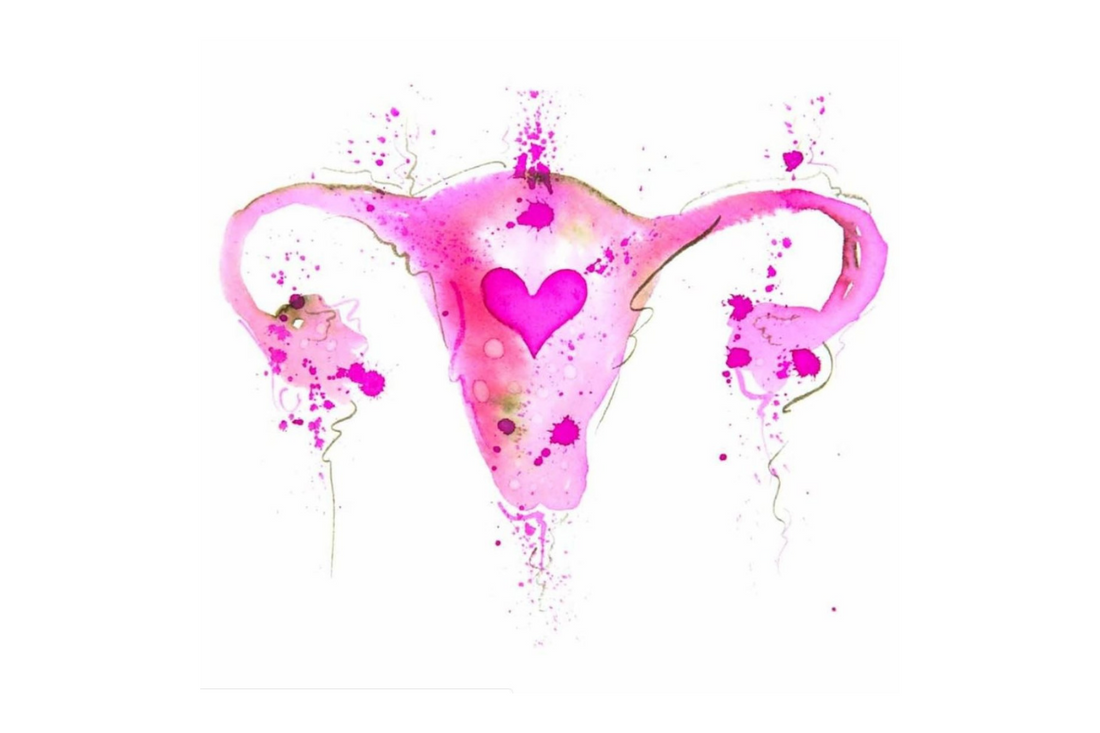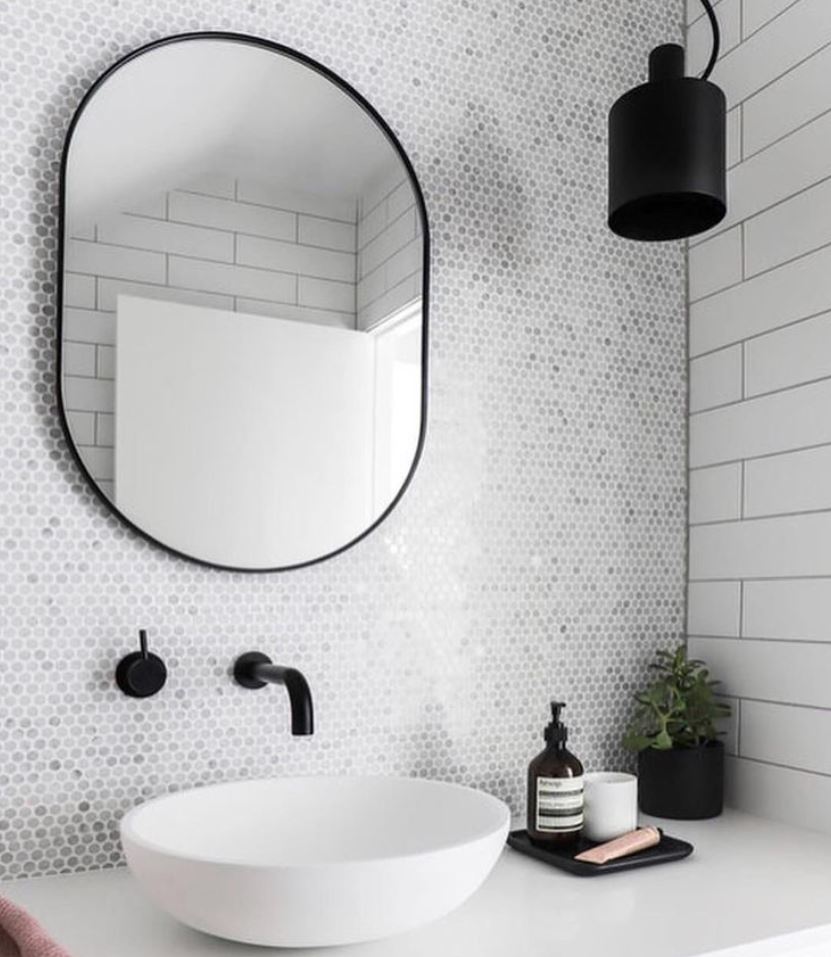Blog
Dry January: Are You Missing Out?
Welcome to that time of the year when wine glasses take a back seat, and water bottles step into the spotlight. For me, it’s the seventh spin on the Dry January train—a tradition that started with a classic hub-side eye-roll, questioning my sanity. Little did he know; he secretly looks forward to it every year. Or maybe he’s just a really good actor! What’s the Buzz with Dry January? So, why Dry January, you ask? Well, it’s my post-holiday ‘cleanse’—and I use the term loosely. After a month of indulging in festive foods and perhaps a tad too much wine, January becomes my month of redemption. Out go the cheese, wine and shortbread cookies; in come veggies and water. It’s all in an attempt to squeeze into my favorite jeans without having to go up a size. Because, let’s face it, my wardrobe and I are inseparable BFFs, and I’m not about to betray it. (and yes, there’s the undeniable benefit of just feeling better nourishing my body with healthier options) The Dry January Elevator Pitch Abstaining from alcohol is the easy part. Explaining it? Now, that’s the real challenge. “No, I’m not pregnant. It’s just a miracle I’m still standing at my age!” It took a while, but I’ve perfected my Dry January elevator pitch over the years. What is the Point of Dry January? Dry January isn’t just about swapping out alcoholic beverages for non-alcoholic delights. For me, it’s a personal reset button, a chance to recalibrate after the holiday frenzy. It’s an opportunity to focus on nourishing my body with veggies and hydrating with water, all while giving my skin the love it deserves. Why Do They Call it Dry January? The name might sound straightforward, but the origins of Dry January are rooted in mindfulness. It started in the UK as a movement to encourage people to be more conscious of their alcohol consumption after the indulgent holiday season. The trend has since spread globally, with many embracing the challenge as a way to kickstart a healthier year. What are the Rules for Dry January? The rules are simple: no alcohol for the entire month of January. It’s a commitment to sobriety for 31 days, allowing your body to reset. It’s not about perfection but about the intention to break the habit of regular alcohol consumption. (and goodness knows, we’ve read enough articles lately about the negative impact of excessive alcohol consumption on our wellbeing). Dry January Benefits Aside from the obvious health benefits like improved liver function and better sleep, Dry January can do wonders for your skin. Alcohol can dehydrate the skin, leading to dullness and premature aging. Dry January Skin Benefits Beyond the general health perks, the impact on your skin can be quite noticeable. One of the key benefits is the restoration of skin hydration. Alcohol is very dehydrating and as a result, notorious for drying out the skin. This often causes dullness and the acceleration of premature aging. By abstaining from alcohol, you’re allowing your skin to reclaim its moisture, leading to a radiant and healthier complexion. What are the Disadvantages of Dry January? While the advantages outweigh the disadvantages, some may find social situations challenging without the usual social lubricant. However, navigating these situations sober can lead to personal growth, increased confidence, and a deeper connection with others. You’ll never know unless you try it! My Dry January Sippers Just because I’ve gone alcohol free, it doesn’t mean I don’t want something special to sip on. Thankfully, we’re pretty spoiled for choice when it comes to prepared mocktails, zero proof beers and even some wine–but there’s still a way to go in that department. Besides the standard bubbly water and Coke Zero in our fridge, I’m currently savoring Sober Carpenter’s incredible IPA. I’ve also delved into the world of Clever Mocktails—a collection of delectable, not overly sweet concoctions. (Check out their G and T or Mojito). Unfortunately–and sadly–because I love red wine, I think they still have a way to go before one will pierce my Dry January heart. I have had luck with some sparkling wines made by Noughty and Oddbird have left a pleasant impression. I think sparkling is definitely the way to go here! And, of course, my inner mixologist makes an appearance in my spare time—blame it on the pharmacist in me! For the behind-the-scenes magic, check out my Instagram where I will be sharing any concoctions I come up with. And, check out our last post, where I shared the recipes for 3 mocktails that you may want to try making yourself. Now I know that Dry January isn’t for everyone. And if that’s the case, there’s no judgement here—you do you! But, if you decide to participate, you may be pleasantly surprised by how you feel after a month without alcohol. Got any stories to share? We’re all ears!
Learn moreDon't Put Up With Vaginal Dryness! This is How to Treat it
Vulvar and vaginal dryness are a common, yet ‘silent’ problem because many women feel embarrassed to talk about it with their partners, friends and even doctors. It can have a really negative impact on quality of life, yet only 25% of women seek help to manage their symptoms. Shop Intimate Care Feminine Moisturizer What is a Natural Remedy for Dry Down There? We’re here to change that and that’s why we’re so excited to share news about More Than Lip Service. You moisturize the rest of your body so why not your vulva and vagina? Our moisturizer helps to treat the symptoms associated with vulvar & vaginal dryness, allowing you to embrace life again. Made with a combination of hyaluronic acid (which your body produces naturally) plus vitamin E and other beneficial ingredients, More Than Lip Service gives you fast, long-lasting & hormone-free relief from the burning, itching & pain associated with vaginal atrophy, vulvar and vaginal dryness. Unlike those other lubricants that just slip right out, ours not only immediately alleviates dryness symptoms but also lasts so long, you may not even need to use it every day. Why Am I Dry Down There All of a Sudden? Over half of women aged between 51 and 60 experience vulvar & vaginal dryness, leading to pain, irritation and burning. While it’s more common in older women, younger women aren’t immune. Around 17% of women aged 18-50 experience issues, even before menopause. The hormonal changes associated with aging—in general, a decline in estrogen levels—is the main cause, but feminine sprays and harsh soaps, swimming pool & hot tub chemicals, detergents, and some medications can also lead to vaginal dryness. It may also be problematic during sexual intercourse, resulting in pain along with intimacy issues. What Causes Vaginal Dryness? A normal, healthy vagina: Is kept supple and moist with natural lubrication produced by glands at the neck of the womb (the cervix). This moisture makes its way slowly down through the vagina, keeping it clean and removing dead cells. The moisture is slightly acidic, helping to keep the area, including the vulva and the labia healthy, preventing infections like thrush. Most women may notice a slight white vaginal discharge – this is perfectly normal. The Bartholin’s glands (two glands at the entrance of the vagina) produce extra moisture to aid sexual intercourse when a woman is aroused. However, a quarter of women aged 50-59 experience vaginal dryness problems during sex and 16% experience pain. In addition to the natural lubrication that makes its way down through the vagina, there’s also a thin layer of moisture that coats the walls of the vagina. This moisture helps sperm travel and survive in for sexual reproduction. It also helps to reduce friction during sexual intercourse. As a woman gets older, a decline in estrogen production can cause the vaginal walls to thin, resulting in fewer cells that secrete moisture. Apart from age, vulvar and/or vaginal dryness may be associated with: Breastfeeding Cigarette smoking Depression Excessive stress Immune system disorders, such as Sjögren syndrome Childbirth Rigorous exercise Some cancer treatments, such as radiation to the pelvis, hormone therapy, or chemotherapy Surgical removal of the ovaries Some medications, including douching, as well as some creams and lotions that are applied to the vaginal area. Can Dehydration Cause Dryness Down There? If you’re not drinking enough water, then your skin—anywhere on your body—is prone to dryness. Dehydration can take a on your vaginal health, leaving the skin feeling itchy and dry. It can also throw off the pH balance, possibly contributing to conditions including yeast infections. Make sure that you’re drinking enough water (most experts recommend somewhere between 6-10, 8 oz glasses a day. Tea, coffee, fruits and vegetables all count towards this and you may need more depending on your level of activity and personal needs. What are the Symptoms of Vaginal Dryness? How Long Does Vaginal Dryness Last? Vulvar & vaginal dryness cause discomfort in the vaginal and pelvic regions along including: Burning Loss of interest in sex Painful sexual intercourse Light bleeding following intercourse Soreness Urinary tract infections (UTIs) that don’t go away or that reoccur Vaginal itching or stinging Beyond painful intercourse, untreated vaginal dryness can cause sores or cracking in the vagina’s tissues. See your doctor if you experience the following: Vaginal dryness that lasts for more than a few weeks and and that isn’t fixable with over the counter solutions (see below) Vaginal dryness is affecting your daily life You experience unusual discharge or bleeding from your vagina You have bleeding after sex or in between your periods If severe vaginal bleeding occurs, it’s important to seek immediate medical attention. How Do You Get Rid of Dryness Down There? Although it can throw havoc with your day to day activities, vulvar & vaginal dryness aren’t life threatening. Thankfully, treatments are available. 1. What is the best lube for menopause? Similar to natural lubrication, lubricants provide temporary relief from dryness and discomfort. Lubricants may be used at any time and aren’t just reserved for perimenopause or menopause. They should be applied to the area around the vulva (lips) and vagina just before sexual intercourse. 2. What is good for vaginal dryness? (Hint: Moisturizers!) Longer lasting than lubricants, moisturizers like More Than Lip Service are designed to be used two to three times a week. They may be used externally or used internally and their effect lasts for days. They’re a great option for women who can’t—or don’t want to—use hormonal options. 3. Do estrogen pills help with dryness? Estrogen pills are a hormonal option available by prescription to help manage vaginal dryness. Creams, gels, patches and rings are also available to give you a range of products to choose from. Supplementing with estrogen can help to manage a range of perimenopausal and menopausal symptoms that women may encounter, including not only, vaginal dryness, but also hot flashes and brain fog. If you feel that you’d benefit from going this route, check in with your physician who’ll be able to help you navigate the choices to find one that works for you. If your main concern though, is vaginal dryness, studies have shown that vaginal moisturizers made with hyaluronic acid and vitamin E (like More Than Lip Service) are comparable in efficacy to hormonal treatments and without the risk of side effects. (1,2,3) Check with your health care provider if you aren’t sure about your options. (1) Jokar A, Davari T, Asadi N, Ahmadi F, Foruhari S. Comparison of the Hyaluronic Acid Vaginal Cream and Conjugated Estrogen Used in Treatment of Vaginal Atrophy of Menopause Women: A Randomized Controlled Clinical Trial. Int J Community Based Nurs Midwifery. 2016 Jan;4(1):69-78. PMID: 26793732; PMCID: PMC4709811. (2) Stute, Petra. Is vaginal hyaluronic acid as effective as vaginal estriol for vaginal dryness relief? Multicenter Study Arch Gynecol Obstet . 2013 Dec;288(6):1199-201. (3) Chen J, Geng L, Song X, Li H, Giordan N, Liao Q. Evaluation of the efficacy and safety of hyaluronic acid vaginal gel to ease vaginal dryness: a multicenter, randomized, controlled, open-label, parallel-group, clinical trial. J Sex Med. 2013 Jun;10(6):1575-84. doi: 10.1111/jsm.12125. Epub 2013 Apr 9. PMID: 23574713.
Learn more5 Tips to Help You Care for Your Menopause Skin
Menopause marks the date one year after a woman’s last period and it can bring about some noticeable, and often, unwanted changes to your skin and hair. Yup, that includes the dreaded chin hairs! Menopause skin’s appearance can change for many reasons and we’ve written about that before. The production of hormones—our body’s chemical messengers—may increase or decrease, and, the impact of your lifestyle and genes are bound to catch up with you. Shop Intimate Care Feminine Moisturizer Shop Active Treatment Serums These 3 Hormones Have the Most Impact on Your Menopause Skin Our bodies produce lots of hormones, but these 3 are most implicated in the skin changes you may notice. 1. Estrogen The mother of hormones in women, estrogen levels decrease as you age, leading to a drop in collagen and elastin production. Menopause skin ends up being thinner, saggier and more wrinkled. It also becomes drier because estrogen is involved in the production of hyaluronic acid, which helps to keep the skin moist. This can affect the skin not only on your face, but also on the rest of your body and is one of the reasons that so many women experience vaginal dryness as they transition to menopause. 2. Progesterone Like estrogen, progesterone levels drop with age. This hormone has been shown to increase skin thickness and elasticity so a decline will have a noticeable impact on your skin. 3. Testosterone Thought acne was something you only had to suffer through your teen years? Sadly, aging tends to increase testosterone levels and is a reason why women may suffer with acne and blemishes at midlife. Chin hairs? You can blame testosterone for those as well! Ready for better skin? Sign up to our newsletter and take advantage of the tips we’re sharing to help you treat the skin on all your body’s places and age with confidence, comfort and grace. Plus get 10% off your first order! 5 Tips for Radiant, Glowing Menopausal Skin 1. Wear Sunscreen Every Day (And consider adding in an antioxidant) Sun damage accounts for over 80% of skin damage–unprotected exposure to ultraviolet rays contributes to brown spots, thinning skin, dryness and wrinkles. Find a good broad-spectrum sunscreen, with a minimum SPF 30 protection and use it every day, year round. Even in the winter, on cloudy days and when sitting next to a window, long-penetrating UVA rays can lead to damage. Layer on an antioxidant along with your sunscreen to help boost protection against the damaging impact of UV rays—they result in free radicals, unstable molecules that harm skin. There are lots of antioxidants you can choose, green tea, reservatrol, coenzyme Q10, ferulic acid. We love them all but especially vitamin C because it has oodles of research to support its benefits in boosting collagen production, brightening the skin and evening out its tone. You can never use too many antioxidants – the more the merrier! Check out our Bespoke Vitamin C Serum, made with a cocktail of antioxidants and other skin beneficial ingredients to help make your skin glow. 2. What is the Best Moisturizer for Menopause Skin? Menopause skin is drier for several reasons, including a decreased ability to hold onto moisture. It can be an issue especially in areas where the air is dry. Moisturize as much as you need, making sure to include these 3 types of ingredients: Humectants. Water loving ingredients that draw moisture into the skin’s top layer. ie. Hyaluronic acid, glycerin, propanediol Emollients. Prevent water loss and help soften and sooth skin. ie. Oils and butters including shea, squalene, fatty acids and fatty alcohols. Occlusives. Provide a physical barrier to help prevent water loss, while also protecting the skin from external irritants. ie. Waxes, some oils and petrolatum. *some ingredients can be both emollient and occlusive (caprylic/capric triglyceride, glyceryl stearate, squalene, shea butter, etc) Many moisturizers, including our Daily Infusion Moisturizer contain a combination of these 3 ingredients. Especially dry skin can benefit from layering—start off with a serum, follow with a moisturizer and then end with an oil like our Antioxidant Face Oil. 3. Become Friends With a Retinoid Retinoids are backed by multiple studies that show their benefits in helping to reduce fine lines and wrinkles by boosting collagen and elastin production. They also help to increase skin cell turnover, fade age spots, even out pigmentation and soften skin. Give it time – you’ll notice benefits with 3 to 6 months of regular use. Retinoids can irritate skin, so you may want to introduce them gradually. We’re big fans of retinaldehyde, found in our A is for Anti-Aging Serum because it is the most gentle, yet still highly effective form of retinoid. Retinaldehyde also decreases oil production and has antibacterial effects so it can also help to manage blemishes that many women experience at midlife. 4. Be Gentle You may be tempted to throw the kitchen sink at your menopause skin, but too much, is definitely too much! Be selective with the products you choose, watching out especially for those that contain irritating ingredients like drying alcohols and fragrances. Go easy on acids, which can thin skin leaving it open to irritation from external irritants; use gentle cleansers, especially if you have dry skin. And use warm, not hot to shower and wash your face. 5. Pay Attention to the Skin on All Your Body’s Places You pay attention to your face, but are you looking after the skin on the rest of your body? Dry skin is an issue in places you may not have considered—that includes vaginal dryness, which more than 50% of women suffer with during perimenopause and menopause. The burning, itching and painful intercourse associated with vaginal and vulvar dryness can be treated with a vaginal moisturizer. More Than Lip Service is made with hyaluronic acid (an ingredient that hydrates skin and which naturally declines as we age) and vitamin E, to give fast, long-lasting & hormone-free relief from the burning, itching & pain associated with vaginal atrophy, vulvar and vaginal dryness. In clinical studies, the combination was shown to be just as effective as hormonal options, without the risk of side effects associated with hormonal solutions. And, unlike many lubricants that just slip right out, ours not only immediately alleviates dryness symptoms but also lasts so long, you may not even need to use it every day.
Learn moreWhy a Vaginal Moisturizer May Be Important to Your Health
You may not be aware of it, but a vaginal moisturizer may be essential to your wellness if you’re navigating your way through perimenopause or menopause. We’ve written about vaginal dryness before – a condition that affects more than 50% of women over the age of 50. Vaginal dryness and its associated symptoms can have a significant negative impact on your quality of life. But, because it’s not talked about much, you may not even be aware of the symptoms caused by vaginal dryness. It’s still considered a hush-hush topic by many, but, we’re here to change that! Find out how to tell if a vaginal moisturizer can help you to manage your symptoms, feel better and embrace life again. Shop Intimate Care More Than Lip Service Vaginal Moisturizer is a hormone-free moisturizer that gives you fast, effective, hormone-free relief from vaginal dryness and its symptoms. Formulated by our pharmacist owner, it allows you to embrace life again! What Causes Vaginal Dryness? Vaginal dryness isn’t experienced by women in menopause only—it’s a condition that can be experienced by any women, at any point in her life. It’s usually associated with a drop in estrogen, the hormone that helps to keep vaginal and vulvar tissue healthy with lubrication, elasticity and the right acidic pH. You may experience a drop in estrogen for several reasons including: Breastfeeding Childbirth Cigarette smoking, or Menopause/perimenopause. Some medications like anti-estrogen pills, allergy and cold medicines, oral contraceptives and some anti-depressants can also cause estrogen levels to drop. Perfumed soaps and washes, douches and certain medical conditions like Sjogren’s syndrome and some immune disorders can also contribute to dryness. More Than Lip Service Vulvar and Vaginal Moisturizer offers fast, hormone-relief for when you experience dryness down there. Is Vaginal Dryness Normal? Here are the Symptoms Vaginal dryness can be quite uncomfortable, leading to soreness or itching in and around your vagina and vulva; pain or discomfort during sex; a more frequent need to pee. It can also lead to recurring urinary tract infections (UTIs). Last of all, it can have a serious impact on your desire to engage in sexual activity, which can impact your relationship. Unlike many menopausal symptoms like hot flashes and night sweats, vaginal dryness isn’t something that goes away. And that’s because physical changes in the vagina make it a long-lasting condition. While many women view it as part of aging and just put up with it, help is available. Make sure you get it if you need it. How Can I Increase My Natural Lubrication? Here’s How a Vaginal Moisturizer May Help Although so many women experience vaginal dryness, it’s thought that more than 90% don’t seek help to manage their symptoms, despite there being several ways to treat the condition. Your choice of treatment depends on your personal preference and what makes most sense for you: Vaginal Lubricant. This can help to reduce the discomfort that occurs during sexual activity when the vagina is dry. It works similarly to natural lubrication and helps to decrease friction during intercourse. A vaginal lubricant is designed to be used on an as needed basis. Vaginal Moisturizer. A moisturizer like our More Than Lip Service provides longer term relief than a lubricant and should be used regularly (several times a week) to keep the vulva and/or vagina moisturized. You can use it internally or externally, depending on your symptoms and need. Studies have shown that moisturizers containing a combination of hyaluronic acid and vitamin e (as in More Than Lip Service) provide as much relief as hormonal treatments, but without the potential for side effects associated with hormone use. Hormone Therapy. If you’re interested in exploring prescription options, your doctor can guide you through the choices available. You can choose from creams, rings, patches or pills. Don’t ignore vaginal dryness, especially if it’s interfering with your quality of life. Help is available so make sure you seek it out if you need it.
Learn moreMenopause: Hormones & Your Skin
If you’re a woman and have reached a certain age, it’s inevitable that you’ll go through menopause. This normal and natural part of the aging process is experienced by all women as they get older and impacts your health, including that of your skin. In this post let’s look at how to keep your skin looking its very best. It’s Your Hormones! In a previous post, we talked about five main hormones that can impact skin – estrogen, progesterone, testosterone, cortisol and insulin. Hormone levels fluctuate depending on a range of issues including stress, diet, sleep, our genes and menopause. At menopause – and the lead up period, perimenopause – a decline in estrogen levels is most implicated with skin health with progesterone and testosterone playing a smaller role. Estrogen. Estrogen seems to have an impact on skin in several ways: It is needed to produce collagen, a protein involved in the skin’s structure and which helps to keep it firm and thick. It has also been shown to boost the production of elastin, a fiber that helps give skin its elasticity. The combined action on elastin and collagen lessens the appearance of wrinkling and helps to keep skin firm and tight. Estrogen helps to maintain skin moisture by increasing the production of hyaluronic acid and can possibly help skin retain its ability to protect against external irritants. Progesterone. Although this hormone isn’t associated with skin health as much as estrogen, declining levels of progesterone are associated with a reduction in skin elasticity, leading to skin sagginess. Testosterone. Unlike estrogen and progesterone, women may experience an increase in testosterone at menopause leading to oilier skin and more breakouts. What Happens to Skin at Menopause These are the main skin changes that women may notice at menopause and beyond: Drier Skin More Wrinkled Skin Saggier Skin Thinner Skin Some women may experience oilier skin with increased breakouts due an increase in testosterone production. How to Treat Skin at Menopause Skin benefits from gentle, effective products and a consistent routine regardless of what life stage you’re at. At Apothekari, we subscribe to a 3 step skin care routine, which benefits most women. In addition to gentle cleansing, an effective UVA/UVB blocking sunscreen and topical antioxidants applied every day, it’s important to manage the skin issues particular to an individual. Whether it’s dryness, hyperpigmentation, wrinkles or age spots, it’s important to find and use the correct products on a regular basis. At menopause, retinoids (a class of ingredients derived from Vitamin A) are non-negotiable because they offer so many benefits to skin: Boost collagen production to minimize the appearance of wrinkles and fine lines Increase the skin’s moisture content and reduce TEWL (transepidermal water loss) to minimize skin dryness Decrease melanin production resulting in a more even and brighter skin tone. Unfortunately, while retinoids are highly effective in helping to minimize the skin changes that many women experience at menopause, they can also be highly irritating. That’s why we are so excited to offer A is for Anti-Aging, our retinoid serum formulated with retinaldehyde, which is the gentlest form of retinoid, while still being highly active to skin. Many of our customers previously unable to tolerate other forms of retinoids like retinol or prescription retinoic acid, can use A is for Anti-Aging because retinaldehyde doesn’t irritate or burn skin. If you’re ready for healthy & beautiful skin at menopause, consider A is for Anti-Aging and find out for yourself why we have so many happy and repeat customers. If you’ve still got questions, get in touch. We’re always happy to help you find the right skin care products to meet your needs.
Learn moreA 3 Step Skin Care Routine, Especially Through Menopause
When it comes to putting together a skin care routine through menopause, we’ve got you covered! There’s no shortage of advice on the internet about how to put together a skin care plan, regardless of the stage of life you’re at. Ranging from the 10 Step Korean Skin Care Regimen to 7 Step Schedules and whittled down versions as well, the confusion is understandable. Do we really need 10 steps? Can we get away with just one? Shop Aha-Mazing Clean Gel Cleanser Shop Cloud Nine Foaming Cleansing Creme SHOP RADIANT SKIN SET Like you, our time is precious, so anything that involves too many steps isn’t going to cut it. 7 is a stretch and 10 is most definitely too many! We’d love to tell you that you could get away with just one, but alas, that would be a fairy tale and over here, we’re all about keeping things real. While we’ve blogged previously about 4 steps to great skin, we’ve managed to whittle it down to a doable 3 steps. We hope you’ll agree that this is manageable indeed. Why You Need a Skin Care Routine Great skin comes down to two main factors – your DNA PLUS your daily habits. If you won the gene pool lottery, then lucky you. However, it’s important to acknowledge that one can’t rely completely on a genetic advantage when it comes to skin. Conversely, if your genes are against you, all is not lost. A well thought out and regular skin care routine can have a big impact on how your skin ages regardless of your genes. Of course, what constitutes a good routine can differ depending on who you speak to. It’s no wonder that many of us may be left feeling completely confused and unsure about where to begin. Caring for your skin shouldn’t be (and really isn’t) all that complicated. You just need to know the right steps to follow. Through menopause, many women struggle with dryness while others experience acne, even if it’s not something they’ve had to contend with before. You may feel as if you’re reliving your teen years again! Hormonal fluctuations are responsible for many of these skin changes so it may be necessary to revisit your skin care routine and consider changing up the products you’re using. By selecting and using products best suited to your individual needs and ensuring that you follow a well thought out skin care routine, you’ll be well on your way. Let’s get to it. The 3 Steps Everyone Needs Here are the 3 steps everyone needs in their skin care routine: Step 1: Cleanse Step 2: Protect Step 3: Perfect Step 1: Cleanse Cleansing is an important and often neglected part of a skin care routine. Beyond removing make-up, dirt and oils from your face, cleansing helps to provide a clean skin surface, allowing any products that you apply on your skin to be absorbed better. Cleansing also helps to reduce blemishes, redness and irritation, which may be caused by an accumulation of make-up, pollution, dirt and oil. It’s a matter of personal preference whether you choose a one-step or two-step cleansing method. Over here, we go back and forth between the two, depending on the time of year, how our skin feels, how much make-up we’ve applied and also by how lazy we feel! (It’s not a good reason, we agree. But, we also recognize that we’re human). We offer two cleansers at Apothekari. Cloud Nine Foaming Cleansing Crème may be used by all skin types, including individuals with sensitive skin or rosacea. It’s a very gentle cleanser and if you’ve found your skin getting drier and/or more sensitive, it’s a good one to consider. AHA-Mazing Clean Exfoliating Cleanser Gel, provides gentle exfoliation and foaming action with a triple combination of alpha hydroxy acids (AHAs). If you prefer more sudsing action or your skin is on the oilier side or you have acne, then this is the cleanser for you. It may be used by all skin types, but caution should be exercised if your skin is overly sensitive skin or if you have rosacea. Step 2: Protect We’ve all heard the saying, “An ounce of prevention is worth a pound of cure” and this holds true when it comes to your skin. Prevent skin damage by protecting your skin with the right ingredients and your skin will reap the rewards for years after. Two types of ingredients are important to know about when it comes to protecting skin – antioxidants and sunscreens. Antioxidants include ingredients like Vitamins A, C and E, green tea extract, pomegranate seed oil, coenzyme q10, etc. They exert their action by helping to prevent skin damage associated with free radicals, unstable molecules that are formed by exposure to the sun’s ultraviolet (UV) rays and pollution, amongst other things. Free radicals lead to a range of unwanted effects including hyperpigmentation and collagen destruction, associated with lines and sagging. Antioxidants can also help boost the effectiveness of your sunscreen. Sunscreens protect skin by minimizing damage caused by UV rays, which are thought to be responsible for more than 85% of skin aging. Hands down, wearing sunscreen daily is one of the most important things you can do to keep your skin looking its best. You can choose between a chemical or physical blocking sunscreen and the choice is up to you. Well formulated and effective products are available in both categories. We’re big fans of physical sunscreens formulated with zinc oxide because zinc is a very soothing skin ingredient and the only sun filter that delivers protection against the full spectrum of UVA and UVB rays. We know you’re wondering…. is it possible to find a product that combines a sunscreen with antioxidants? Yes, it’s possible to find sunscreens that contain antioxidants and Shade SPF 30 is one. However, most sunscreens don’t contain levels of antioxidants high enough to deliver the maximum protection against free radicals. For the greatest benefit, most experts recommend that you apply both an antioxidant formulation (consider our Bespoke Vitamin C Serum 10 or 15%) and a sunscreen in the morning. Generally, apply the antioxidant first, followed by sunscreen. Step 3: Perfect Once you have the basics of Steps 1 and 2 covered, it’s time to look at your specific skin needs. This will differ depending upon your age, your ethnicity and even where you live (climate, humidity, etc). Whether, you’re worried about wrinkles and fine lines, crows feet, dark circles, hyperpigmentation, dry skin or acne, Step 3 focuses on that. It’s important to find and use treatments that are designed to address your skin’s specific problems. You can choose from a range of products including moisturizers, eye treatments, skin brighteners, acne remedies and various serums. Some treatments, like sunscreens, are designed to be applied during the day. Others, like retinoids (which tend to degrade when exposed to sunlight, are best used at night). Antioxidants, moisturizers, eye creams, skin brighteners etc may be used day and/or night. Whatever you use, give the product a fair chance to make a difference. New skin cells turn over once every four to eight weeks so you need to wait at least that long to determine if the product is working. Regardless of your specific skin needs, one ingredient that’s a must for anyone concerned about healthy and beautiful skin, is a retinoid. Retinoids are derived from Vitamin A and deliver a range of skin benefits including: increasing collagen and elastin production to fight wrinkles, fine lines and skin sag; skin brightening effects, an increase in skin moisture content and a reduction in oil production. They not only help to improve the skin’s appearance, but can also reverse damage caused by the sun. Additionally, retinoids have anti-acne properties, making them a useful addition in the management of acne, which strikes many women through menopause. Apothekari A is for Anti-Aging contains retinaldehyde – a form of retinoid that offers effective yet gentle treatment. It’s well tolerated by most skin types, especially if introduced gradually into your skin care regimen. We know you have lots on your plate; we do too. That’s why we feel that 3 steps in your skin care routine are all you need to achieve healthy and beautiful skin at menopause or at any other phase of your life. Let’s keep things simple and uncomplicated AND with great skin to show for it!
Learn more






